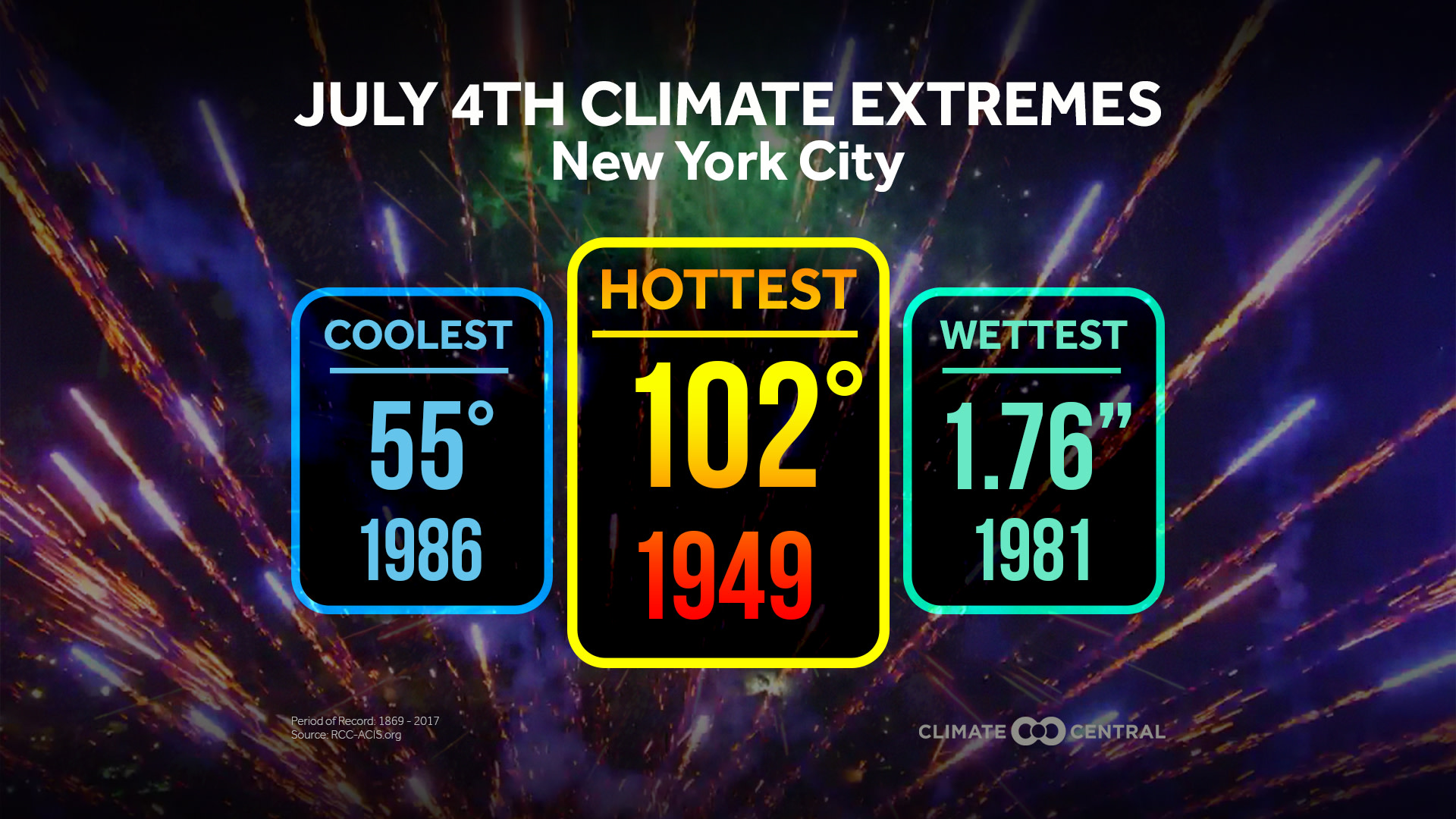4th of July
Happy Birthday, America! Fireworks, cookouts and water recreation are all associated with 4th of July celebrations — and so is heat. Much of the country reaches its statistically hottest time of the year within a week or two of July 4, and that heat is getting more intense as greenhouse gas concentrations build up in the atmosphere. In fact, the five hottest Julys on record in the U.S. have all come since 2002. This week, we look at the climate extremes for Independence Day in your city: the hottest, coolest, and wettest.
Methodology: Local Independence Day climate extremes retrieved from the Applied Climate Information System.
National Parks
What better way to celebrate America’s birthday than to visit — or talk about — our National Parks (at least we think so)! In fact, more than 300 million people visited in each of the last three years, and park attendance is only expected to to increase in the coming years. The biggest increases in visitation are projected in the high-latitude and high-elevation parks as rising temperatures from climate change will extend the primary visiting season.
Rising temperatures are not the only aspect of climate change that will affect the National Parks. Sea level rise has contributed to retreating mangroves in Everglades National Park as salt water intrudes into the ecosystem. Since 1968, about half of Glacier National Park’s namesake glaciers in have disappeared, and the remaining glaciers could be gone as early as the next 15 years. At Yellowstone, there are 30 fewer days with snow on the ground than in the 1960s, and the growing season has also increased 30 days in that time, increasing wildfire risk.
The National Park Service began in 1916, but the first national park was Yellowstone, created by the U.S. Congress in 1872. The National Parks System contains:
417 sites covering covering 84 million acres
18,000 miles of trails
The world’s longest known cave system, Mammoth Cave National Park (400 miles of mapped caves)
The deepest lake in the U.S., Crater Lake in Crater Lake National Park (1,943 feet)
The highest and lowest points in North America
Denali in Denali National Park (20,310 feet above sea level)
Badwater Basin in Death Valley National Park (282 feet below sea level)
See interviews with park rangers and read more about climate change and national parks in our special centennial report.
Methodology: NPS statistics provided by the National Park Service, with visitation projections from Fisichelli et al (2015).
